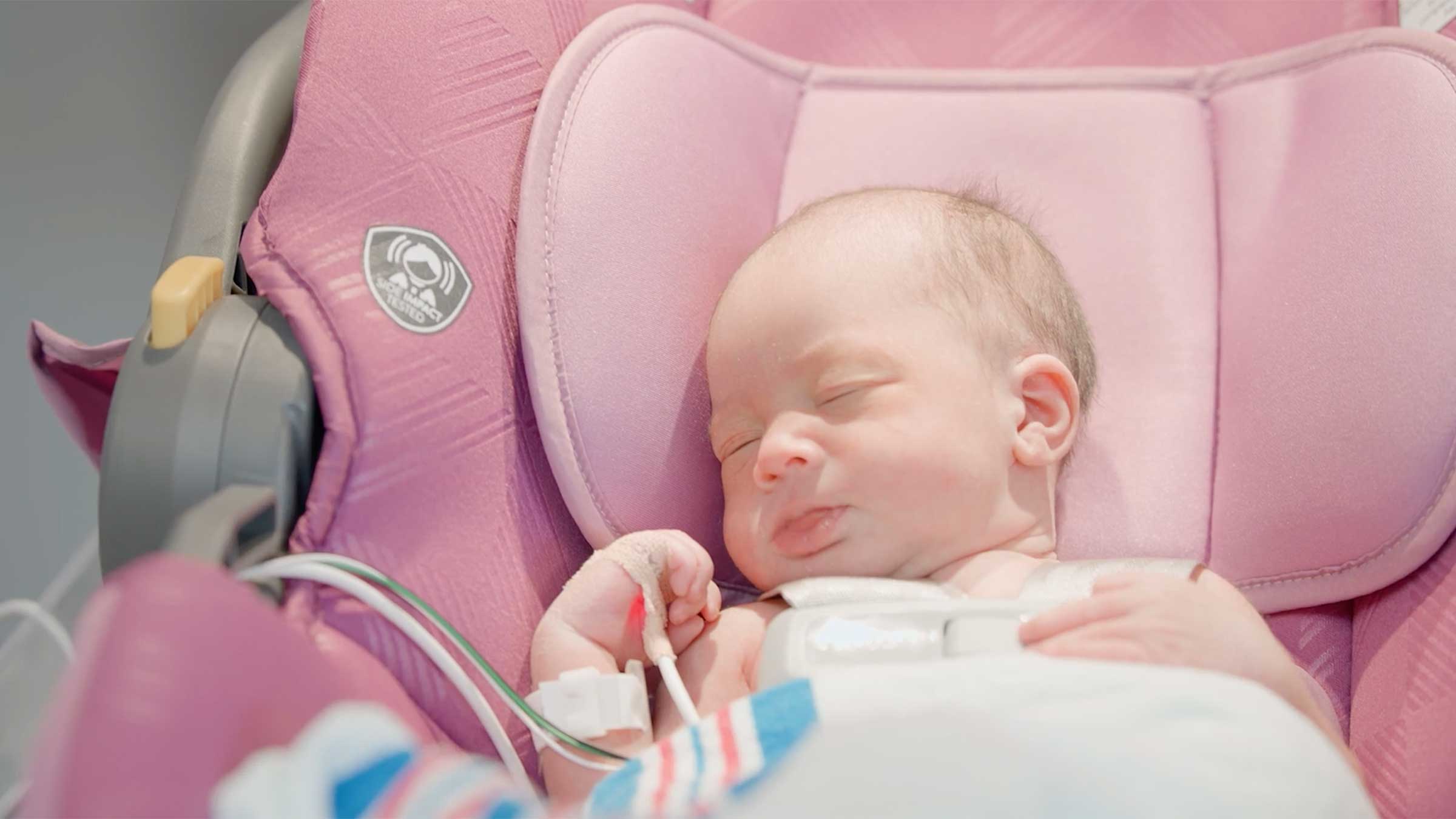Which newborns need ‘car seat tests,’ and what happens if they don’t pass
Before they can head home from the hospital with their guardians, some newborns need to pass a car seat test or car seat challenge.
What is the car seat test?
The car seat test isn’t just to ensure that the baby fits appropriately in the seat — it’s to see that they can breathe properly while in that position for a long enough period of time. It’s a standard practice to ensure that babies can safely travel in the car, but many new parents might not have heard of this test until their baby needs to be evaluated.
Jenna Holcomb, RN, a postpartum nurse at The Ohio State University Wexner Medical Center, answers some of the common questions family members might have about their baby’s car seat test.
- Question Which babies undergo a car seat test in the hospital?
-
Answer
Car seat tests are given to babies that are at increased risk of airway or breathing problems. This includes…
- Infants who are born “late-preterm,” meaning those born at 35 weeks to 36 weeks and 6 days
- Infants weighing less than 2500 grams, or 5.5 pounds, at birth
- Infants experiencing low oxygen saturation or who have other breathing problems
- Question Where is a car seat test performed?
-
Answer
We do car seat tests in the hospital nursery, but we use your car seat that you bring to the hospital with you — the one you’ll take the baby home in.
- Question How is a car seat test performed?
-
Answer
Once the baby is at least 24 hours old and has fed well, a baby who needs a car seat test will be taken into the hospital nursery for their test. The test lasts 90 minutes, but it can be up to 120 minutes if you have a longer drive home and we need to test whether baby can safely travel that long in that position.
We attach the baby to a cardiac monitor, a pulse oximeter and a monitor that allows us to watch them the entire time. We watch for desaturation, a low heart rate and whether they stop breathing at any point.
- Question What if the baby’s care team notices breathing problems during the car seat test?
-
Answer
If the baby experiences any breathing issues, we’ll take them out of the car seat, monitor their vital signs and make sure they’re stable. Then we can repeat the test within 12 or 24 hours.
- Question What does an infant not pass their car seat test, and what happens next?
-
Answer
A baby doesn’t pass their car seat test if they have a lower-than-normal heart rate, an oxygenation that drops below 90% for a sustained amount of time, or if their respirations drop too low. The baby can be tested up to three times. If, by the third time, the infant still doesn’t pass the test, they’ll be transferred to the neonatal intensive care unit (NICU) for further testing of their breathing and airway.
- Question How can families prepare for their baby’s car seat test?
-
Answer
When you first arrive to the hospital, have the car seat already installed in the car if possible. Bring in the car seat carrier (where the infant sits), but leave the base installed in the car. The seat will be used if they need to undergo a car seat test, but the baby will also get strapped into it safely as you leave the hospital room for home.
You can also bring in any inserts that the car seat comes with, but make sure only to use inserts from the car seat manufacturer that are meant to be used with that seat.
- Question Can “aftermarket” car seat inserts be used safely with the car seat?
-
Answer
Inserts and other car seat accessories bought separately from the car seat typically aren’t recommended because they haven’t been tested for safety by that manufacturer with that car seat.
Sometimes, in the clinical setting of the hospital nursery, the care team will try some insert options during the car seat test to see if they help the baby breathe better while they watch on the monitor. If they’re effective, families might be advised to continue using those inserts when taking the baby home, and their pediatrician can advise them on when to remove the inserts safely.
- Question If their baby needed a car seat test, what should a parent or guardian do to keep a baby safe at home and while traveling?
-
Answer
Even if the baby has passed the car seat test, we recommend that a parent or support person watches the baby when they’re in a semi-inclined position. That could be a swing, a car seat, a bouncer, etc. We recommend that someone sit in the backseat with the baby when traveling, to monitor any color change or breathing problems.
An infant shouldn’t be in a semi-inclined position for more than two hours, so if your drive is long, we recommend that you stop and take breaks.

Join the family of Buckeye Babies
Learn about obstetrics and gynecology services from central Ohio's most experienced team.
Get started








